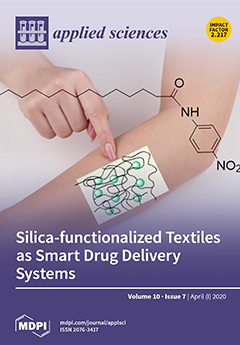Open AccessFeature PaperArticle
Surface Functionalization of Polyethylene by Silicon Nitride Laser Cladding
by
Matteo Zanocco, Elia Marin, Francesco Boschetto, Tetsuya Adachi, Toshiro Yamamoto, Narisato Kanamura, Wenliang Zhu, Bryan J. McEntire, B. Sonny Bal, Ryutaro Ashida, Osam Mazda and Giuseppe Pezzotti
Cited by 13 | Viewed by 3706
Abstract
Functional coatings are commonly applied to biomaterials in order to improve their properties. In this work, polyethylene was coated with a silicon nitride (Si
3N
4) powder using a pulsed laser source in a nitrogen gas atmosphere. Several analytical techniques were
[...] Read more.
Functional coatings are commonly applied to biomaterials in order to improve their properties. In this work, polyethylene was coated with a silicon nitride (Si
3N
4) powder using a pulsed laser source in a nitrogen gas atmosphere. Several analytical techniques were used to characterize the functionalized surface of the polymer, including Raman spectroscopy, laser microscopy, scanning electron microscopy (SEM), and energy dispersive X-ray spectroscopy (EDS). Antibacterial properties were tested in vitro against
Staphylococcus epidermidis. The Si
3N
4 coating sensibly reduced the amount of living bacteria when compared to the uncoated polymer. Osteoconductivity was also tested in vitro using SaOS-2 osteosarcoma cells. The presence of Si
3N
4 coating resulted in an increased amount of hydroxyapatite. Coating of polyethylene with silicon nitride may lead to improved performance of indwelling orthopaedic or less invasive medical devices.
Full article
►▼
Show Figures





